Wondering how to slice a steak? Because there definitely is a right way and a wrong way to do it.
If you know me, you know I’ve cooked a lot of steaks—like, seriously, a lot. If there’s one thing I’ve learned standing over a blazing fire pit or grill, it’s that cooking steak is an art, but what about slicing steak? That’s the final touch, the difference-maker, the moment when all that grilling magic really pays off.
Slicing steak correctly turns a good steak into a great steak. Cut it the wrong way, and even naturally tender cuts of beef can become a chewy, disappointing mess.
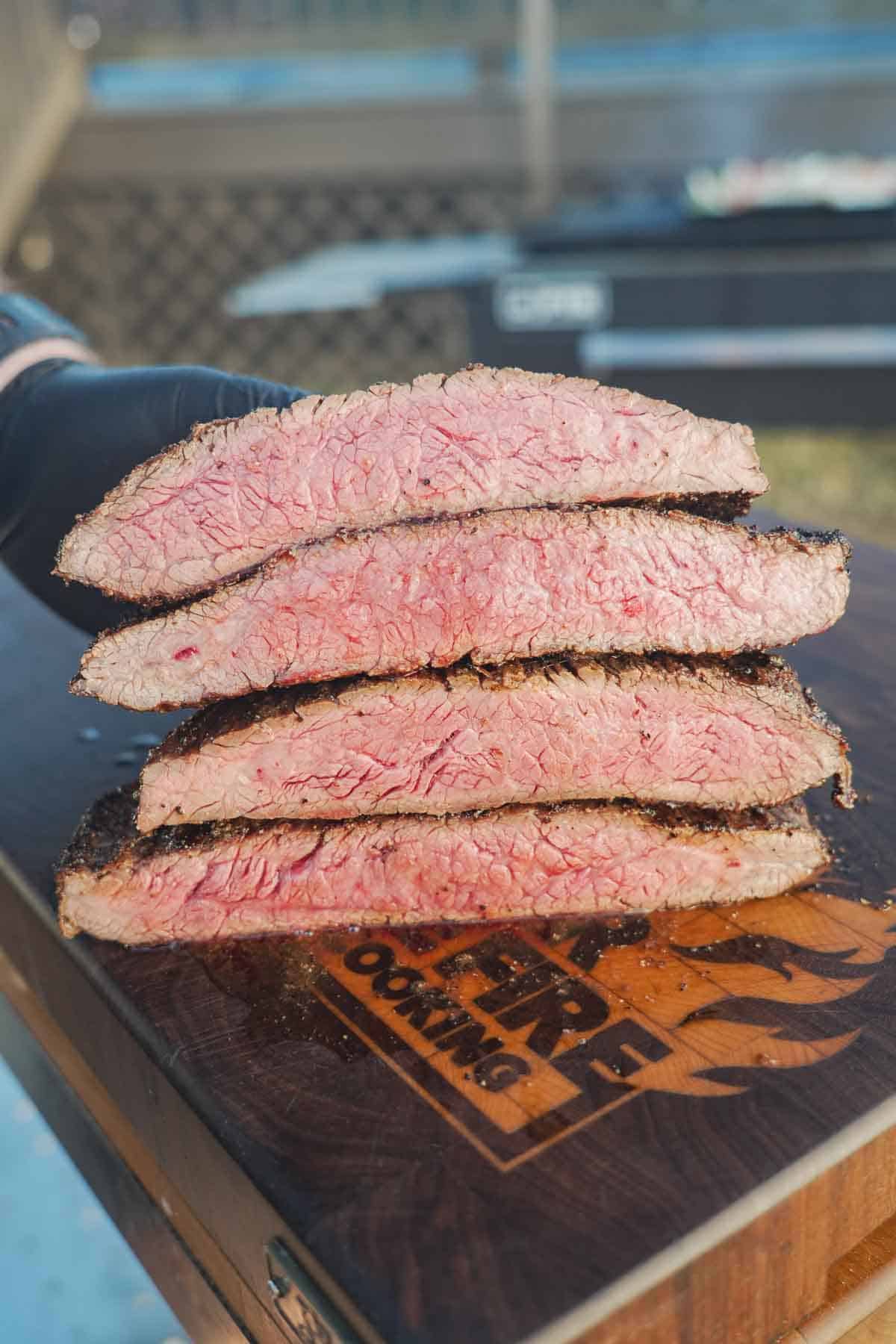
So, let’s dive into a step-by-step guide designed for steak lovers who want to nail the perfect slice every single time for all the different cuts of meat. From the tricky cuts like skirt steak and tri-tip to classics like brisket and ribeye, I’ve got you covered. Grab your sharp knife, and let’s get slicing!
Table of Contents
- Why You Gotta Slice Steak Against the Grain
- How to Slice Steak: Tips by Cuts of Steak
- — How to Slice Skirt Steak (The Tricky One)
- Skirt Steak Recipes
- — How to Slice Tri Tip (The Shape Shifter)
- Tri Tip Recipes
- — Brisket (Pitmaster’s Pride)
- Brisket Recipes
- — How to Slice Flank Steak (Skirt Steak’s Cousin)
- — Picanha (Brazilian BBQ Favorite)
- More Picanha recipes
- — Other Popular Cuts
- How to Slice a Steak using the Best Steak Knives
- Common Mistakes to Avoid
- My favorites
- FAQs for How to Slice a Steak
Why You Gotta Slice Steak Against the Grain
Here’s the thing: every cut of meat has muscle fibers. If you slice with those fibers, you’re left chewing forever. Why does this happen? It’s because slicing with the muscle fibers leaves them running long and strong together.
But slice against the grain? Man, that’s the game-changer. You’re shortening those tough fibers, giving you tender bites every time.
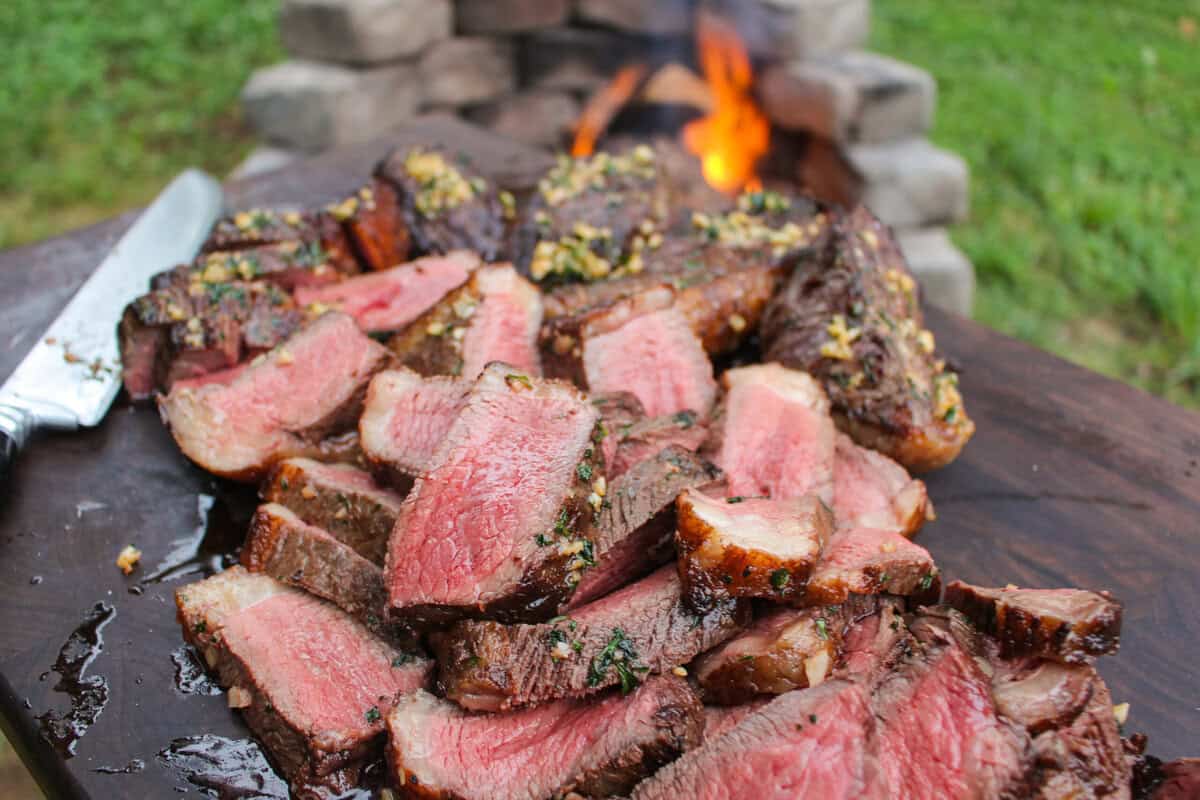
To do this, you’ve got to spot the grain direction first—it’ll look like tiny lines running across the meat. Always use a sharp knife—like your favorite chef’s knife or butcher knife—to make clean, effortless cuts. Trust me, a dull knife means extra effort shredded meat fibers, and a steak that’s less tender than you deserve.
How to Slice Steak: Tips by Cuts of Steak
— How to Slice Skirt Steak (The Tricky One)
Skirt steak, known for its long muscle fibers, needs extra close attention. A skirt steak is a long, thin cut of meat. If you lay the steak down with the length of it running from North to South, the muscle fibers will be running East to West. Without considering the muscle fibers, one could easily think slicing horizontally (East to West) makes the most sense. I can see the temptation, BUT that’s the wrong way to do it.
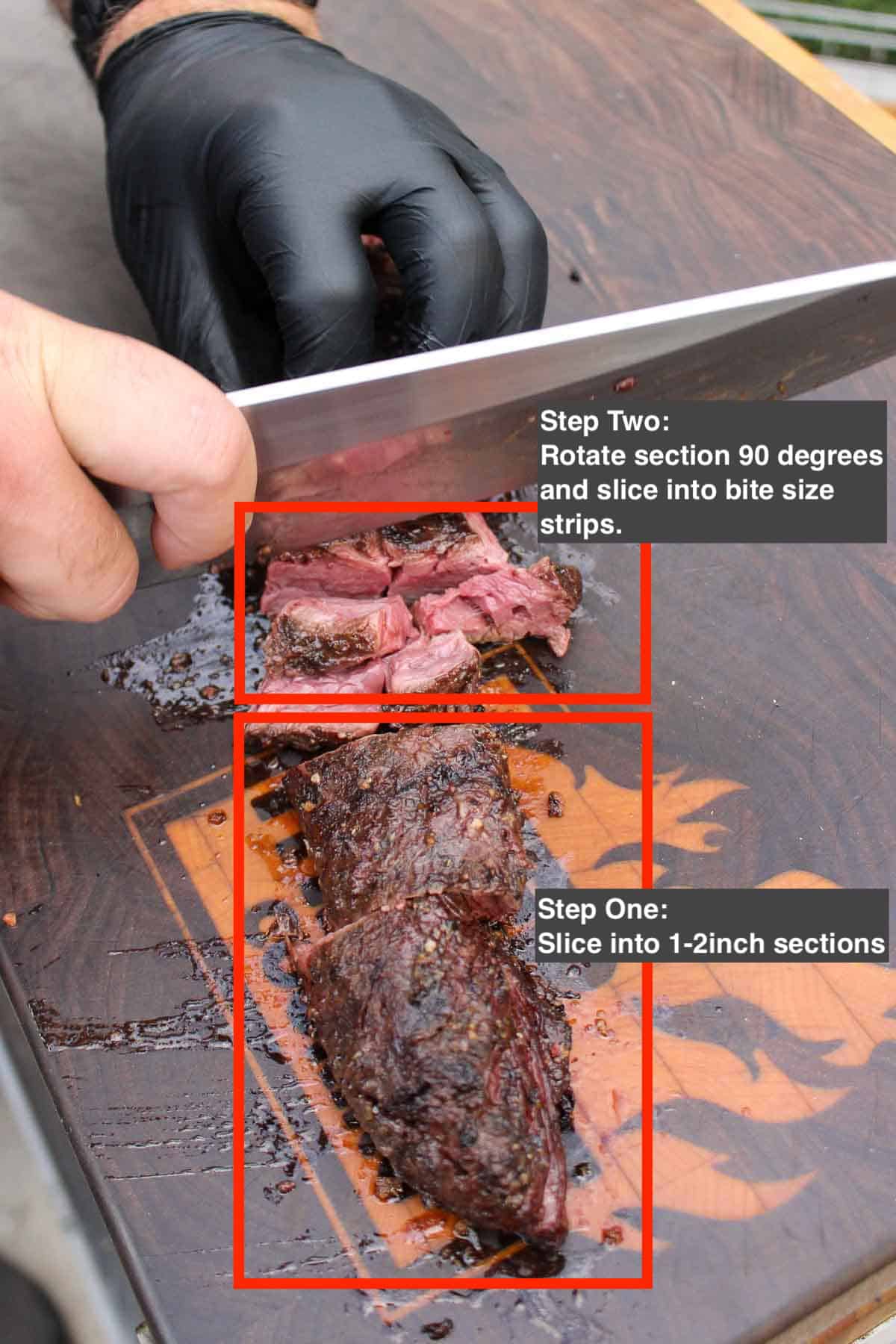
We need to first place the raw steak on a cutting board and then cut it into smaller pieces/sections. Now, above I just told you to NOT cut the steak East to West (aka horizontally). However, that’s actually what we’re going to do here as the first step. THE DIFFERENCE, is that we are cutting the skirt steak into sections, not bite size pieces.
So, to start, make your East to West cuts, but make them roughly 1″-1.25″ apart. You should now be left with a handful of skirt steak squares. Now, rotate these pieces at a 90-degree angle, then slice thin slices perpendicular to the grain of the meat. You’ll be left with the perfectly tender, bite size pieces of skirt steak that are truly a treat!
Skirt Steak Recipes
— How to Slice Tri Tip (The Shape Shifter)
Tri-Tip is tricky since the grain direction changes partway through the piece of meat. Pay close attention and make precise cuts: slice the cooked meat into two sections at the point where the grain shifts. Then, slice thin slices against the grain direction for tender meat every time.
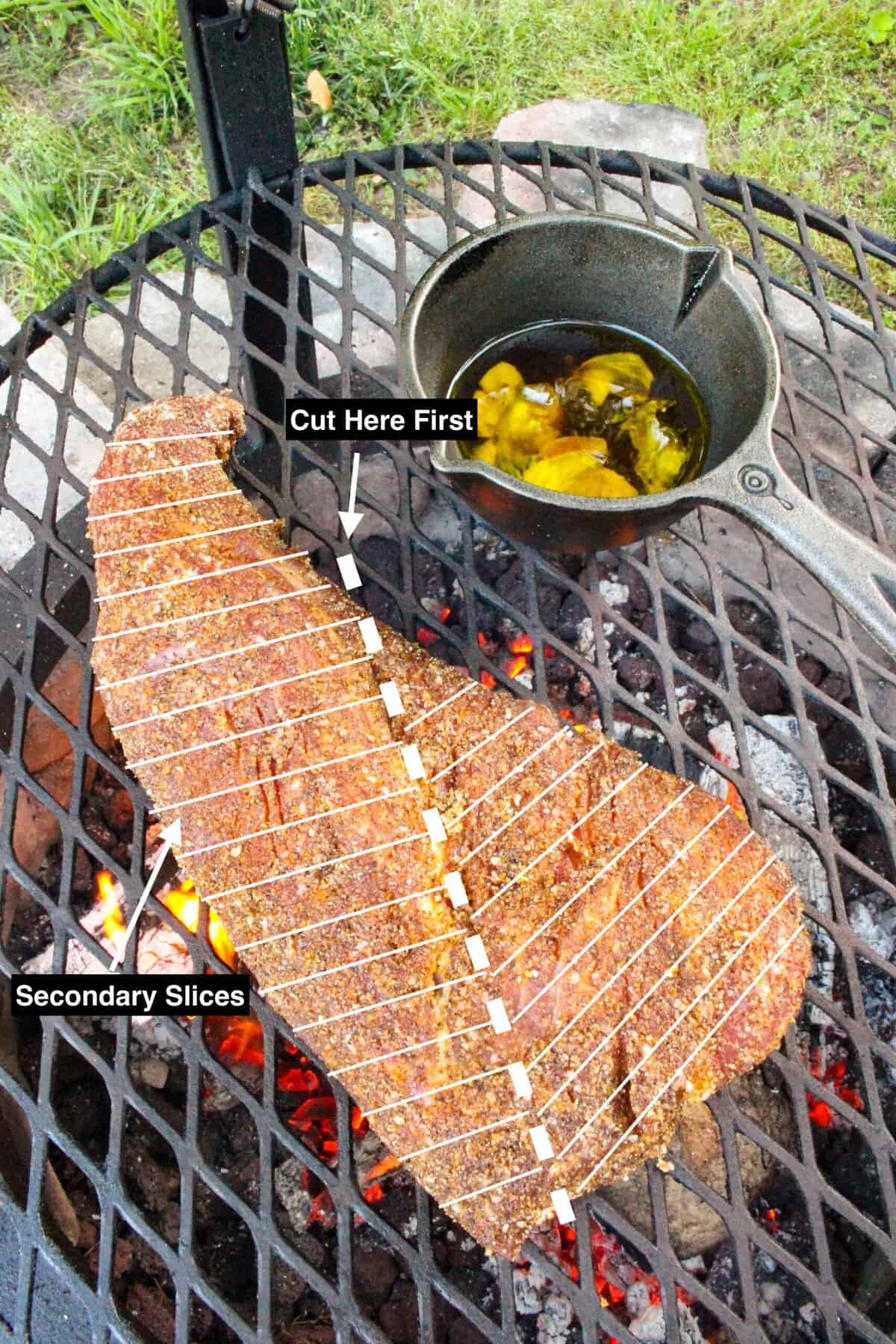
Don’t let Tri Tip intimidate you! Tri Tip is such a delicious cut of meat, and because it’s not seen very often, this is the prime opportunity to impress your friends! After letting your steak rest (resting time makes a big difference), make your big slice from the point and follow it down. Then rotate as needed and slice thinly and precisely against the grain of the meat fibers for tender, juicy bites. Check out the below for some of my Tri Tip recipes, let them help you make something so freakin’ delicious.
Tri Tip Recipes
— Brisket (Pitmaster’s Pride)
Brisket, one of the tougher cuts of meat, benefits greatly from proper slicing. It is a massive chuck of meat that’s actually made up of two different muscles, therefore it has two different grain structures. The two different muscles are referred to as the “the point” and the other as “the flat”.
Similar to our Tri Tip, when we go to slice the brisket, it’s best for your first (and main) slice to be one that separates the point from the flat. Proceed to slice the flat against the grain, about pencil width slices. You’ll have to rotate the point 90 degrees. The point is typically sliced at thumb width thickness.
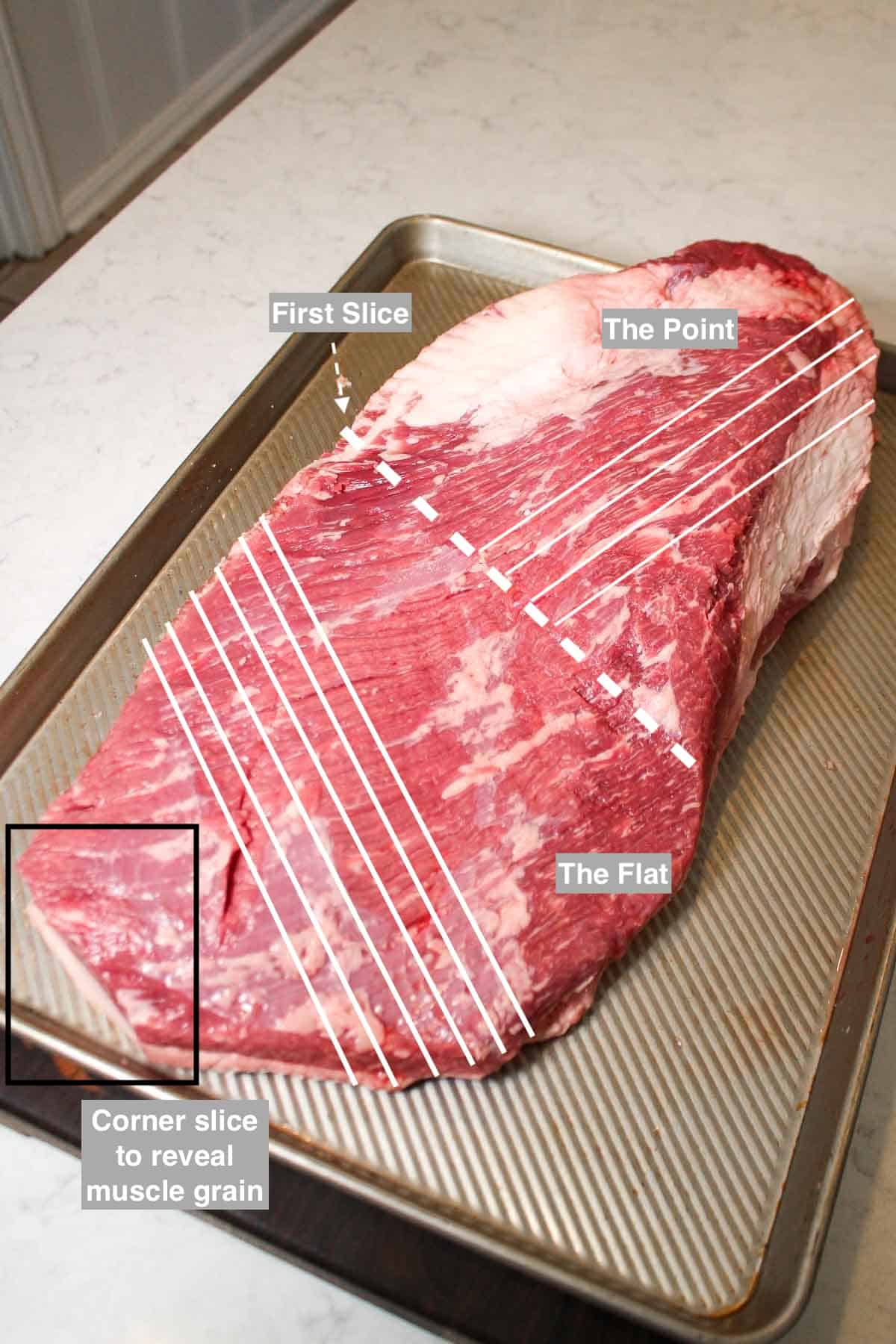
Before cooking, slice off a small piece in the corner of the flat (against the grain) to reveal the visible lines of muscle fibers. I love this trick because it gives you the direction of the slice you need to make after it’s smoked. Once it’s smoked, the muscle fibers are much for difficult to see due to the bark and seasoning, so this give you a slicing guide. Therefore, making it easier for us to slice against the grain when it’s serving time!
If you’re cooking brisket, you’ve already signed yourself up for a lengthy cook. Don’t let all those hours go to waste by slicing incorrectly in the final steps! Pencil thin slices against the grain gives you the highly prized and most classic bite of brisket.
Brisket Recipes
Want to do something fun with the point of your brisket? Give one of my Brisket Burnt Ends and BBQ Brisket Burnt Ends a try! Alternatively, check out all my Best Burnt Ends Recipes here!
— How to Slice Flank Steak (Skirt Steak’s Cousin)
While flank steak is similar to skirt steak, it’s (in my opinion) more straightforward in slicing. Flank steak has long fibers, and therefore they’re easier to spot and then make your precise cuts against the grain. Use a sharp slicing knife and then cut thin slices at a perpendicular angle across the grain of the meat. This is the easiest way and provides clean cuts and great steak for any special occasion.
Related recipes: Spiced Habanero Flank Steak and Fajita Steak Pinwheels
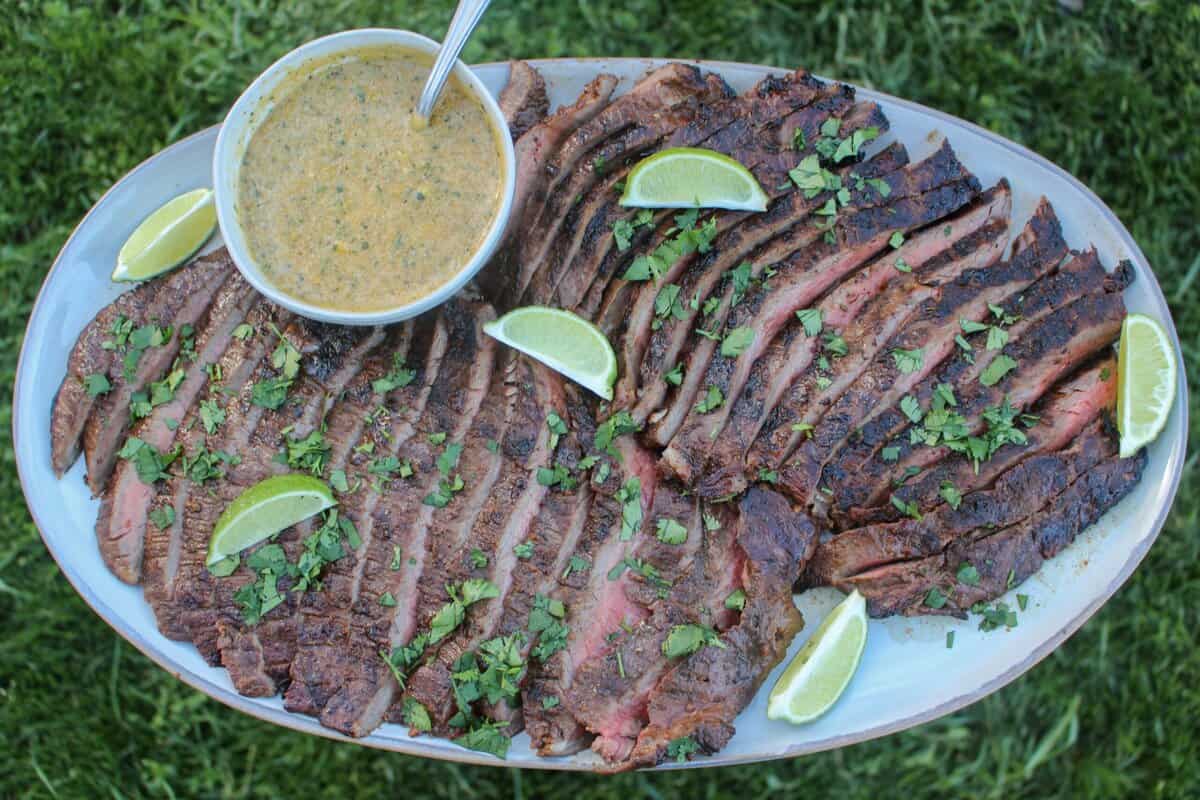
— Picanha (Brazilian BBQ Favorite)
Picanha’s muscle fibers run vertically. The classic way to grill picanha is to start by searing the entire cut over high heat. Then, cut thick steaks from the seared (but still basically raw steak), then grill them individually. Then slice thin slices across the grain direction for mouthwatering results. Ensure you use a sharp knife for the perfect slice.

More Picanha recipes
Can’t get enough picanha? Make sure to check out all my Best Picanha Recipes here!
— Other Popular Cuts
- Ribeye Steak & T-bone Steak: Let these steaks rest first to keep the juices intact, then slice in straight lines against the grain direction.
- Hanger Steak: Known for tough muscle fibers and connective tissue, slice thinly against the grain for maximum tenderness.
- Filet Mignon: Typically tender already, but slicing at a perpendicular angle to the grain enhances texture further.
In most cases, you can go with your natural instincts when it comes to slicing these steaks. It’s a bit more intuitive; and because most of the steaks are already in their serving size, they’re thin enough that the slice you make shouldn’t largely impact its tenderness. They’re tender steaks already.
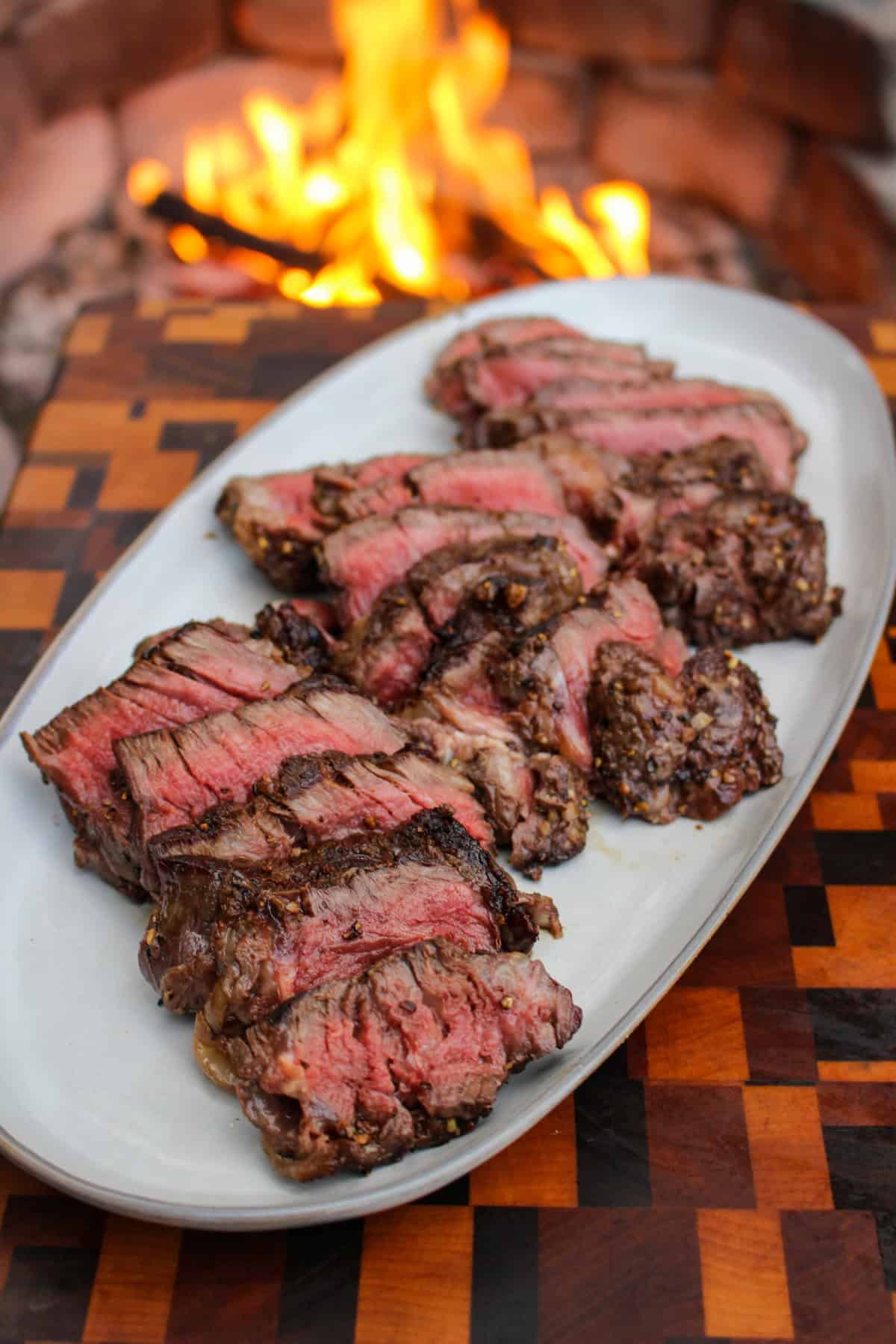
How to Slice a Steak using the Best Steak Knives
Choosing the right tools doesn’t stop at slicing your steak in the kitchen—it also matters at the table. The best steak knives glide effortlessly through your juicy steak, ensuring each bite remains tender and flavorful. Look for steak knives with serrated or straight blades made from high-quality stainless steel.
Serrated blades handle tougher cuts of meat beautifully, while straight-edged knives give clean, precise cuts on tender meat like filet mignon or ribeye steak. Comfort is key too; pick knives with ergonomic handles for the best results. Don’t underestimate this small detail—using the right steak knives truly makes a world of difference.
Common Mistakes to Avoid
Here’s a quick heads-up on some common pitfalls I see all the time. First, avoid using a dull knife—it forces you to press harder, tearing the meat fibers instead of slicing through them cleanly. And ditch the regular fork when holding your steak in place. It punctures and damages the surface, letting those flavorful juices escape.
Lastly, don’t rush the slicing after the resting period. Letting your steak rest is crucial—those precious minutes redistribute the juices, giving you a juicy, flavorful steak. So take a breath, give your steak some resting time, and slice confidently for perfection every single bite.
My favorites
FAQs for How to Slice a Steak
Look closely at your steak before slicing; you’ll see the direction of the grain as visible lines or fibers running through the surface of the meat. Slice perpendicular to those lines for the most tender results.
Always go with thin slices for tougher cuts. Thinner slices shorten tough muscle fibers, making the meat feel more tender and easier to chew.
A sharp chef’s knife can definitely do the job, but specialized steak knives or slicing knives can make it even easier to achieve precise, clean cuts without too much force.
Add flavor to everything you’re cooking
shop over the fire spice lines

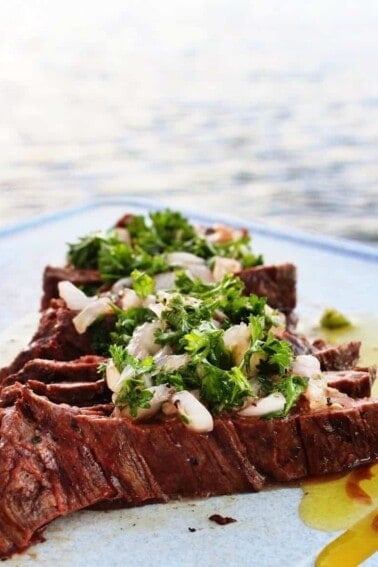
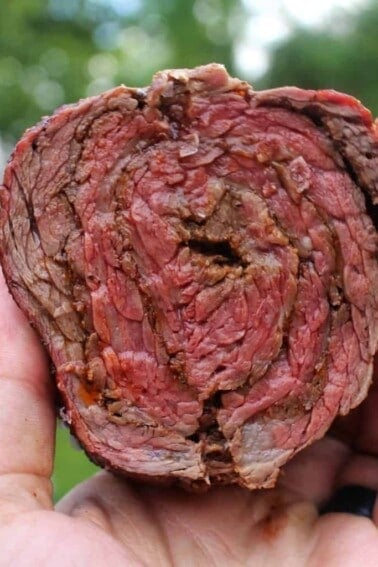
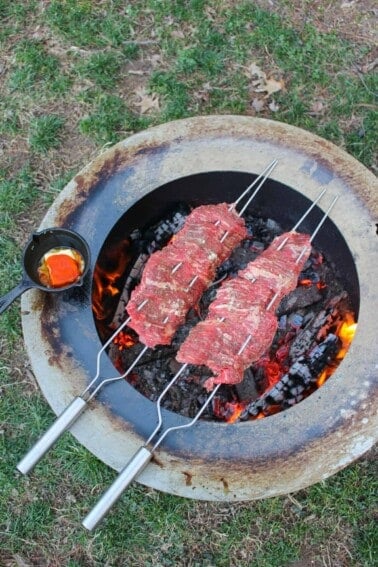

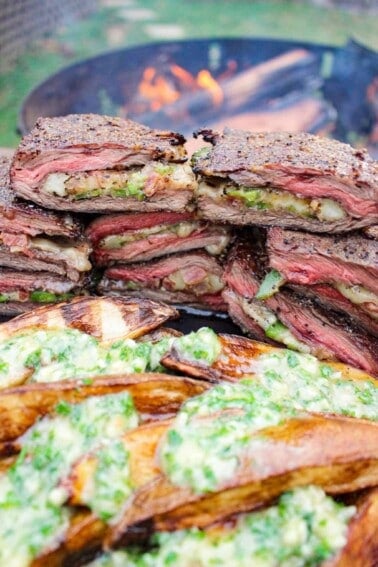


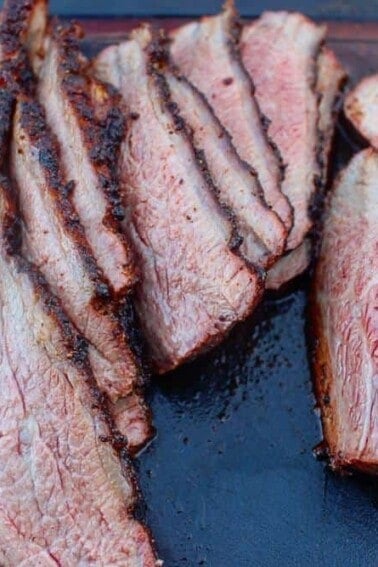
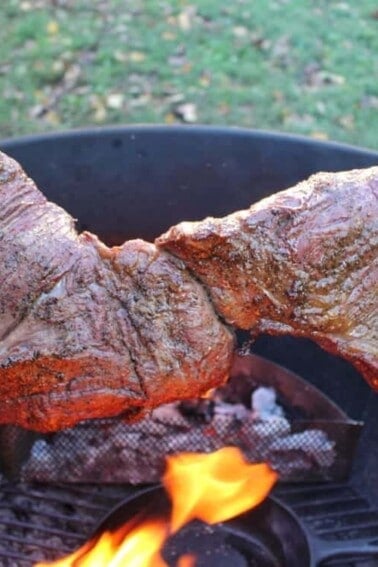
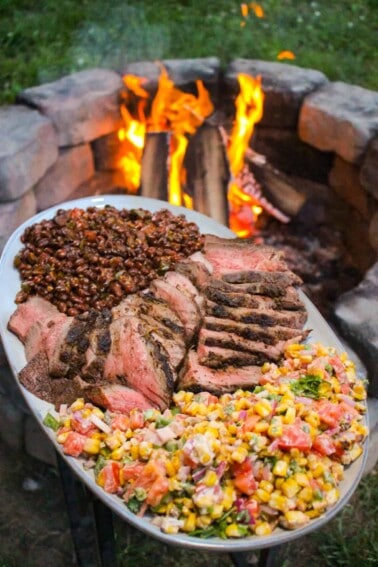

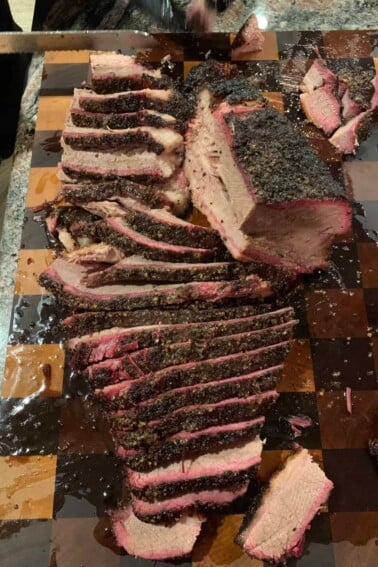
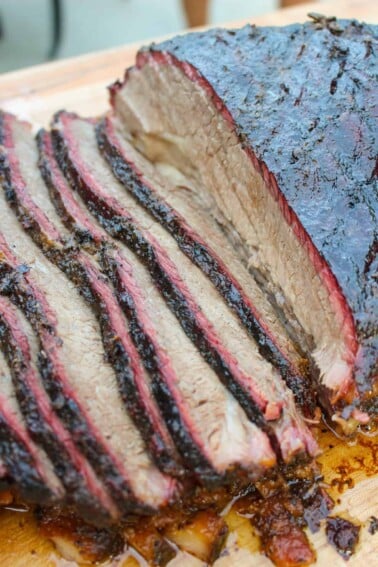

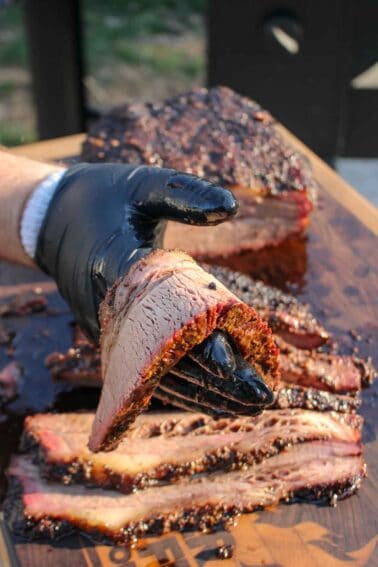
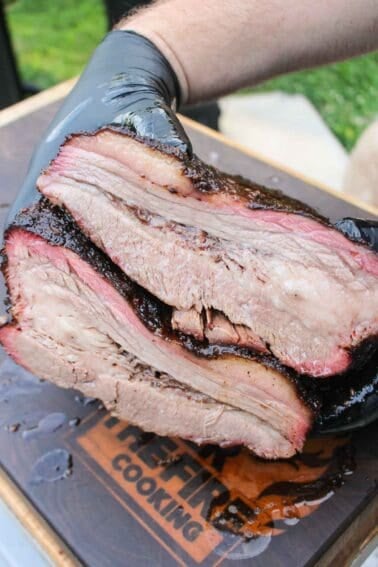
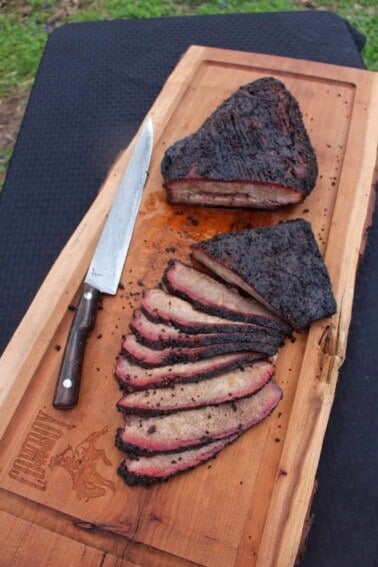
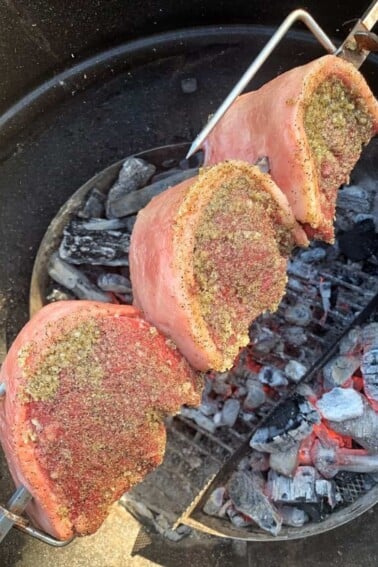
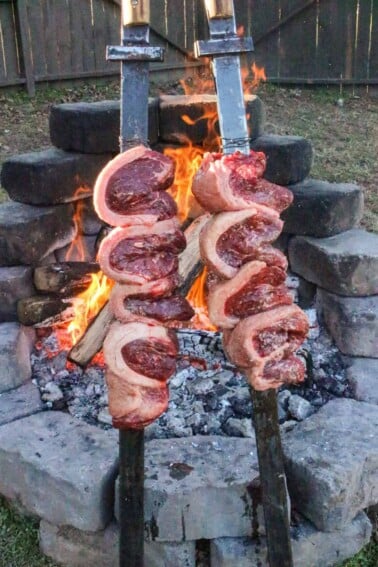
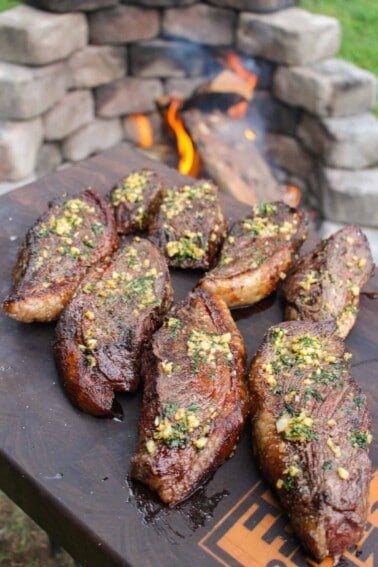










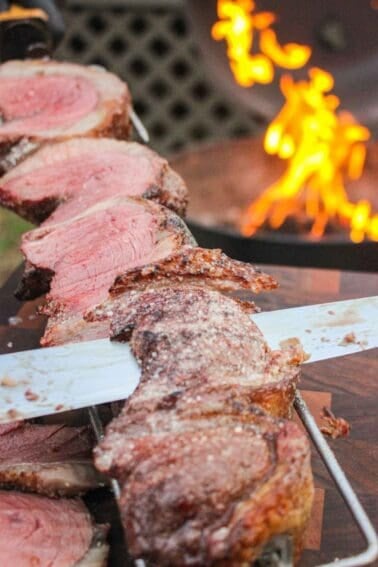

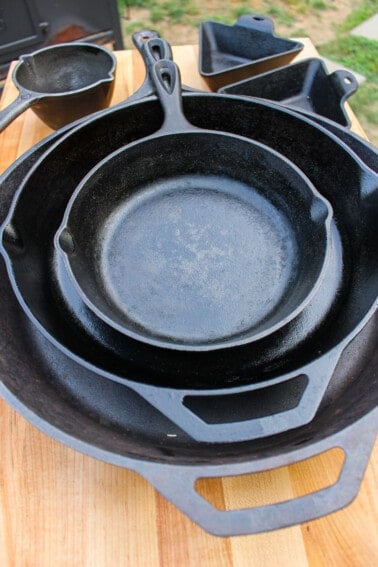
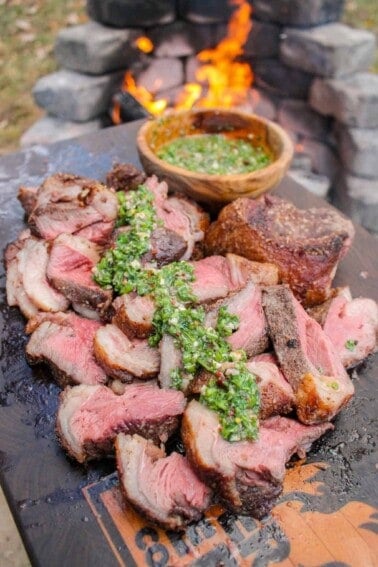









You say in the article to cut the raw tri tip into two pieces, but I’ve never seen you do that in any cooking videos; you always cook the steak whole. Are you suggesting to cut it raw just because it’s easier to see the grain direction?
No… thats just a typo. Should say slice the “cooked” tri-tip!